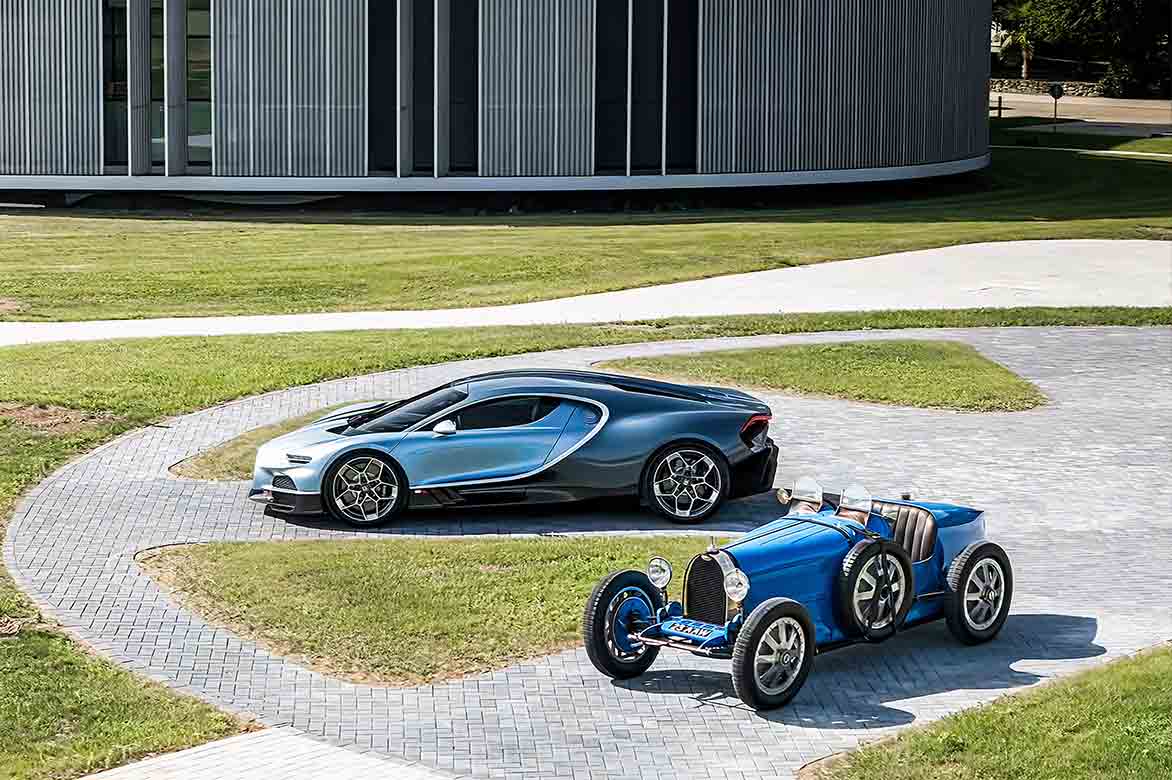8/5/2024
Molsheim
Bugatti Type 35: the race where it all began exactly 100 years ago
A century ago, on August 3rd 1924, the Bugatti Type 35 was introduced to the world for the first time as five examples of Ettore Bugatti’s new racing car took to the starting grid at the Grand Prix de Lyon. With one held in reserve to showcase to the media, there was an immediate appreciation of the elegance and beauty of the Type 35, but no one could have imagined just how quickly, and how far, the legend of this lightweight Grand Prix racer would grow. Even 100 years later, it continues to inspire the direction of new Bugatti hyper sports car and Bugatti enthusiasts all over the world celebrate its impact.
The series of Grand Prix races between 1922 and 1925 was a period of great innovation in the automotive world, requiring cars to have engines of no more than 2 liters in capacity, weigh a minimum of 650kg and with a minimum width of 80cm, allowing for mandatory passenger mechanics. It did, in effect, drive the evolution of roadgoing sports cars, and required manufacturers to derive more power with new inventions in engine technology rather than simply increase capacity. Ettore Bugatti’s latest entry into this elite tier of motorsport was the Type 35.
The Lyon-Givors race itself was globally renowned, and attracted more than
100,000 spectators, making it the ideal launchpad for Bugatti’s newest racing
car. Over 500 miles and 35 laps, the races regularly lasted more than seven
hours so to compete was not just to prove your speed but also to prove
reliability. And as if seven hours of full throttle racing wasn’t enough of a
test, Ettore Bugatti asked for the Type 35s to be driven from the factory in
Molsheim to the race, on public roads, and back again – a journey of five hours
each way even today.
The revolutionary cars made the road journey to Lyon without trouble but the
race would turn out to be not quite as straightforward. However, the Type 35’s
main issue during its debut race was caused by a component Bugatti had no
control over: the vulcanized tires. Characteristic of Bugatti’s meticulous
attention to detail, mechanical failures were rare, but a manufacturing defect
within the tires caused many of the cars to retire, but not before one of them
could secure a fastest lap of the whole race.
Testing within the intensity of a motor race such as the Grand Prix allowed
Ettore Bugatti to identify the Type 35s weaknesses and improve them
consistently; a formula which he continued to apply as the Type 35 evolved over
its six years of production. During its active period, the beautifully
proportioned, sublimely engineered racing car won some 2,500 victories across
multiple disciplines, including road races, rallies, speed trials, and hill
climbs. At the most demanding road competition of the age – the Targa Florio in
Italy – the Bugatti Type 35’s star shone brightest and burnt longest, with five
consecutive victories between 1925 and 1929, a record that stood right up until
the last Targa Florio happened in 1977. It was such an astonishing motorsport
achievement that it is celebrated to this day, with the International Bugatti
Meeting 2024, hosted in Sicily in May, welcoming a number of historic Bugatti
models to take part and celebrate the 100-year anniversary of the Type 35.
Achievements such as this exemplify how the iconic Bugatti model sparked a
period of innovation in racing and road car design, as manufacturers hurried to
develop faster cars, only for further ingenuity to emerge from Molsheim,
including supercharged variants of the Type 35.Earlier in the year the Bugatti Club France retraced the cars’ route from
Molsheim to Lyon in a number of Type 35s and Bugatti Grand Prix cars. And just
recently, to coincide with the exact anniversary date of the centenary, August
3, the Bugatti Owners Club UK set off from England in a number of historically
significant vintage Bugatti models, including a selection of Type 35s, setting
their sights on the original route of the 1924 circuit in Lyon. On their way
from England to Lyon, they paid homage to Hellé Nice with a visit to her grave
at Saint-Mesme. Nice – as well as Elisabeth Junek – became two iconic female
racers of the Type 35 building its global notoriety even further.
From August 3, 1924, the course of Bugatti changed forever. Even today, the
impact of the world’s most successful racing car ripples throughout the brand.
The track-only Bugatti Bolide¹ – being currently assembled in the Atelier –
takes its inspiration directly from the Type 35’s lightweight, focused design.
The Mistral², a two-seater open-top car with agility at its heart, also found
inspiration from the Type 35, and so did the car ushering in another all-new era
for Bugatti: the Tourbillon³. The Type 35’s elegant and narrow fuselage served
as a great source of inspiration for the Tourbillon’s frontal design, while its
renowned agility and unbeatable performance is infused in the Tourbillon’s
character.
Two cars, separated by more than 100 years but united by the same spirit of
innovation and constant improvement that has always defined Bugatti.
Fuel consumption and emissions
1 Bolide: Not subject to Directive 1999/94/EC, as it is a racing vehicle not intended for use on public roads.
2 W16 Mistral: This model is not subject to Directive 1999/94/EC, as type approval has not yet been granted.
3 Tourbillon: This model is currently not subject to directive 1999/94/EC, as type approval has not yet been granted.

